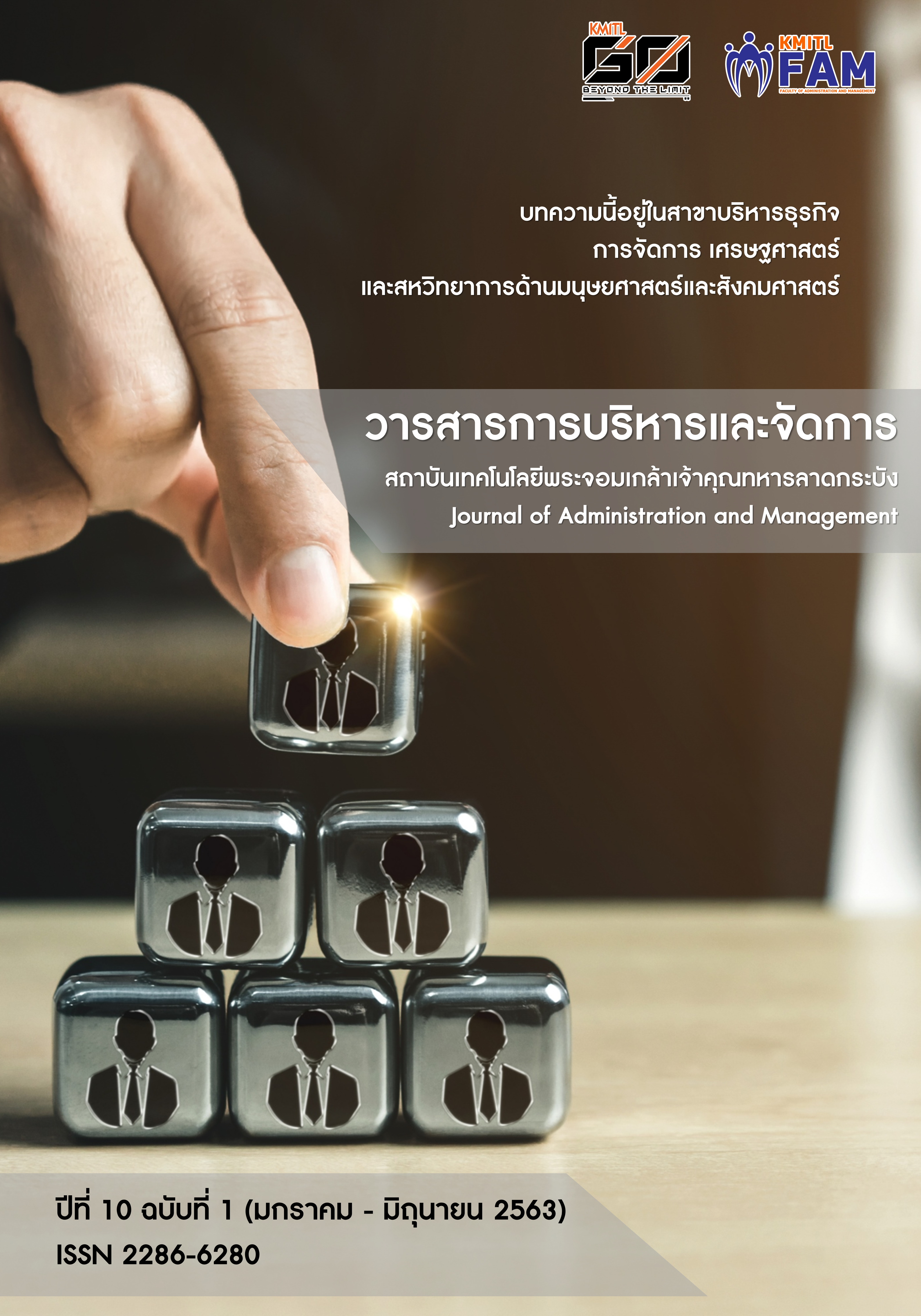Teaching Learning Activity Using CIPPA in Developing Writing Skill of the bachelor’s degree students Rajabhat Rajanagarindra University
Main Article Content
Abstract
ABSTRAC
The research objectives were 1) to construct and develop learning plan in Thai language writing skills using CIPPA Model of the bachelor’s degree students Rajabhat Rajanagarindra University 2) to compare the learning achievement of Thai language writing skills using CIPPA Model 3) to evaluate students’ satisfaction toward teaching learning Thai language writing skills using CIPPA Model. The sample consisted of 30 students Rajabhat Rajanagarindra University. The research instruments were lesson plans of teaching Thai language in writing skills using CIPPA Model, Achievement test paper of Thai language writing skills, and the students’ satisfaction toward teaching learning activities in CIPPA Model. The statistical devices used in this research were, the process of calculating lesson plan efficiency, t-test (dependent sample) for comparing between pretest and posttest achievement score, as well as mean () and standard deviation (S.D.) for evaluating the satisfaction level toward CIPPA teaching learning Model.
The finding revealed that:
- The teaching learning plan in Thai language writing skills using CIPPA Model
was at 85.00/83.00 score of efficiency.
- The comparison between pretest and posttest achievement score in Thai language
Writing skills of the students were significant difference at .01
- The students’ satisfaction toward teaching learning Thai language writing skills
using CIPPA Model were rated at highest level ( = 4.52, S.D. = 0.47)
Keyword : Teaching Learning, Writing Skill
Article Details
Journal of KMITL Business School is available both online and in printed version.
**All articles or opinions presented in this issue of the Journal of KMITL Business School reflect the thoughts of their respective authors. This journal serves as an independent platform for a variety of viewpoints. Authors bear full responsibility for the content of their articles.**
**All articles published in this journal are copyrighted by KMITL Business School, King Mongkut's Institute of Technology Ladkrabang. The editorial team permits copying or using articles, but a reference to the journal is required.**
References
สาธิตจุฬาลงกรณ์มหาวิทยาลัย : การศึกษาเปรียบเทียบกลุ่มที่สอนเขียนเรียงความด้วยแบบเทคนิครูปกรวย และ
แบบปกติ. คณะครุศาสตร์, จุฬาลงกรณ์มหาวิทยาลัย.
[2] ผอบ โปษกฤษณะ. (2554). ลักษณะเฉพาะของภาษาไทย. พิมพ์ครั้งที่ 8, กรุงเทพฯ: บริษัท รวมสาส์น (1997)จำกัด.
[3] ทิศนา แขมมณี. (2555). ศาสตร์การสอน: องค์ความรู้เพื่อจัดกระบวนการเรียนรู้ที่มีประสิทธิภาพ. พิมพ์ครั้งที่ 3.
กรุงเทพฯ: จุฬาลงกรณ์มหาวิทยาลัย.
[4] พวงรัตน์ ทวีรัตน์. (2543). วิธีวิจัยทางพฤติกรรมศาสตร์และสังคมศาสตร์. กรุงเทพฯ: มหาวิทยาลัยศรีนครินทรวิโรฒ
ประสานมิตร.
[5] Likert, R. (1961). New Patterns of Management. New York: McGraw-Hill Book Company.
[6] Cronbach, Lee J. (1970). Essential of Psychology Testing. 3rd ed. New York: Harper and Row,
Perubliser’Inc
[7] Grant Wiggins และ Jay Mctighe. (2005). Understanding by Design United State of The America:
Alexandra, Virginia. Retrived November 17, 2011 from http://en Wikipe dia.org/wiki/Backward
Design.
[8] กัสมัสห์ อาแด. (2548). การสร้างชุดการสอนโดยใช้รูปแบบการจัดการเรียนรู้แบบซิปปาโมเดล เรื่องความสัมพันธ์
ระหว่างรูปเลขาคณิตสองมิติละสามมิติ สำหรับนักเรียนขั้นมัธยมศึกษาปีที่ 1. วิทยานิพน์การศึกษามหาบัณฑิต,
สาขาวิชาคณิตศาสตร์, มหาวิทยาลัยทักษิณ.
[9] นฤชล จงรุ่งเรือง และ ปิยธิดา นิลศรีกุล. (2549). การศึกษาผลของการจัดการเรียนการสอนผู้เรียน
เป็นศูนย์กลางโดยใช้รูปแบบซิปปา กับพฤติกรรมใฝ่รู้ของนักศึกษาพยาบาล วิทยาลัยพยาบาลเกื้อการุณย์.
วารสารรามาธิบดีพยาบาลสารม, 12 (2), 18-25
[10] ปอเรียม แสงชาลี (2549) ผลของการเรียน เรื่องเส้นขนาน โดยใช้การจัดกิจกรรมการเรียนรู้ตามรูปแบบ
ซิปปา(CIPPA Model) และกิจกรรมการเรียนรู้ตามรูปแบบของ สสวท. ที่มีผลต่อการเรียนรู้ของนักเรียน ชั้น
มัธยมศึกษาปีที่ 2. วิทยานิพนธ์ปริญญามหาบัณฑิต, สาขาหลักสูตรและการสอน, มหาวิทยาลัยมหาสารคาม.
[11] กาญจนา กาฬภักดี. (2550). ผลการศึกษาผลสัมฤทธิ์ทางการเรียนและค่านิยมทางวิทยาศาสตร์ด้าน การมีเหตุผลของ
นักเรียนชั้นมัธยมศึกษาปีที่ 2 ด้วยกระบวนการจัดการเรียนรู้ตามรูปแบบซิปปา. สารนิพนธ์การศึกษามหาบัณฑิต,
สาขาวิชาการมัธยมศึกษา, มหาวิทยาลัยศรีนครินทรวิโรฒ.
[12] กัลยา พันปี. (2551). การเปรียบเทียบผลสัมฤทธิ์ทางการเรียนวิชาคณิตศาสตร์และทักษะการเชื่อมโยงทางคณิตศาสตร์
ของนักเรียนชั้นมัธยมศึกษาปีที่ 2 ระหว่างกลุ่มที่จัดการเรียนรู้รูปแบบซิปปา (CIPPA MODEL) และรูปแบบ
วัฏจักรการเรียนรู้ (4 MAT). สารนิพนธ์ครุศาสตรมหาบัณฑิต, สาขาการจัดการการเรียนรู้, มหาวิทยาลัยราชภัฏ
พระนครศรีอยุธยา
[13] รชาดา บัวไพร. (2552). การจัดการเรียนการสอนโดยใช้รูปแบบการเรียนการสอนแบบโมเดลซิปปาที่มีต่อผลสัมฤทธิ์
ทางการเรียนและเจตคติทางวิทยาศาสตร์ ของนักเรียนชั้นมัธยมศึกษาปีที่ 1. สารนิพน์การศึกษามหาบัณฑิต,
สาขาวิชาการมัธยมศึกษา มหาวิทยาลัย ศรีนครินทรวิโรฒ.


